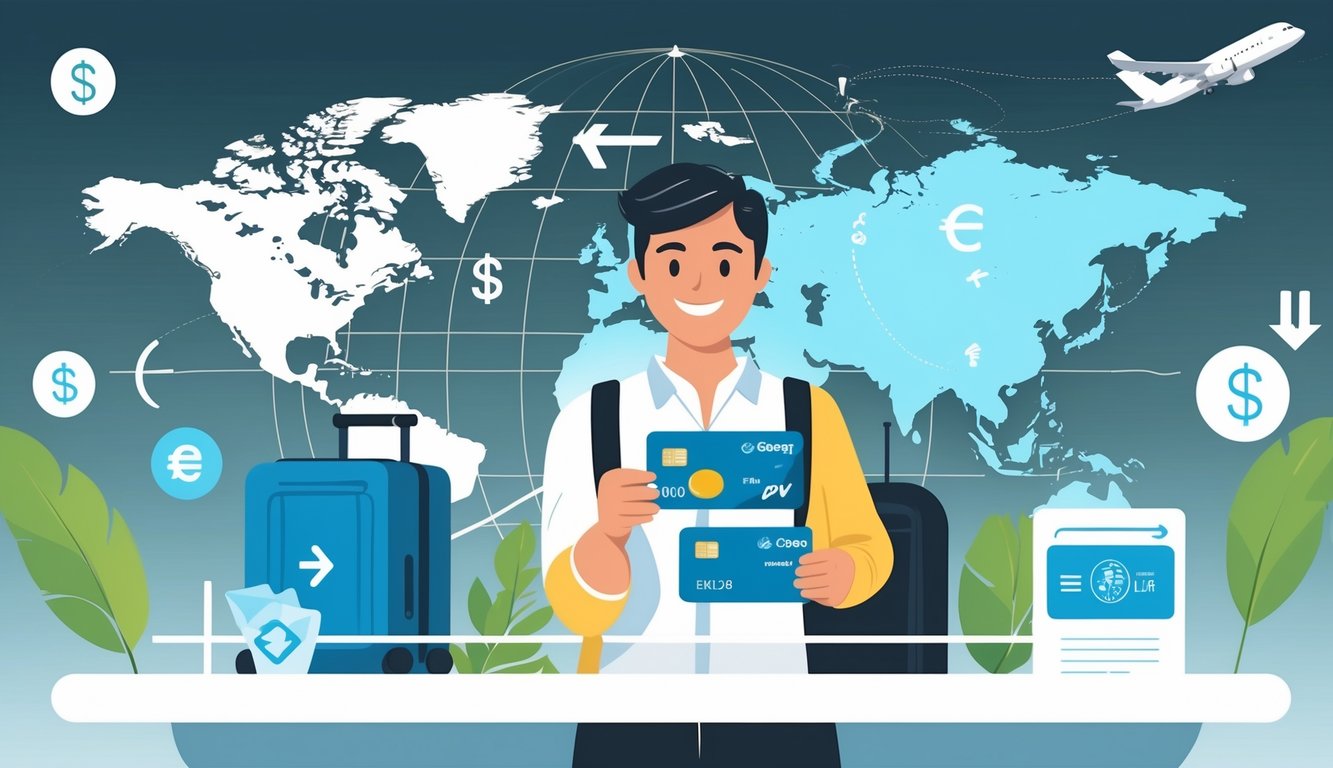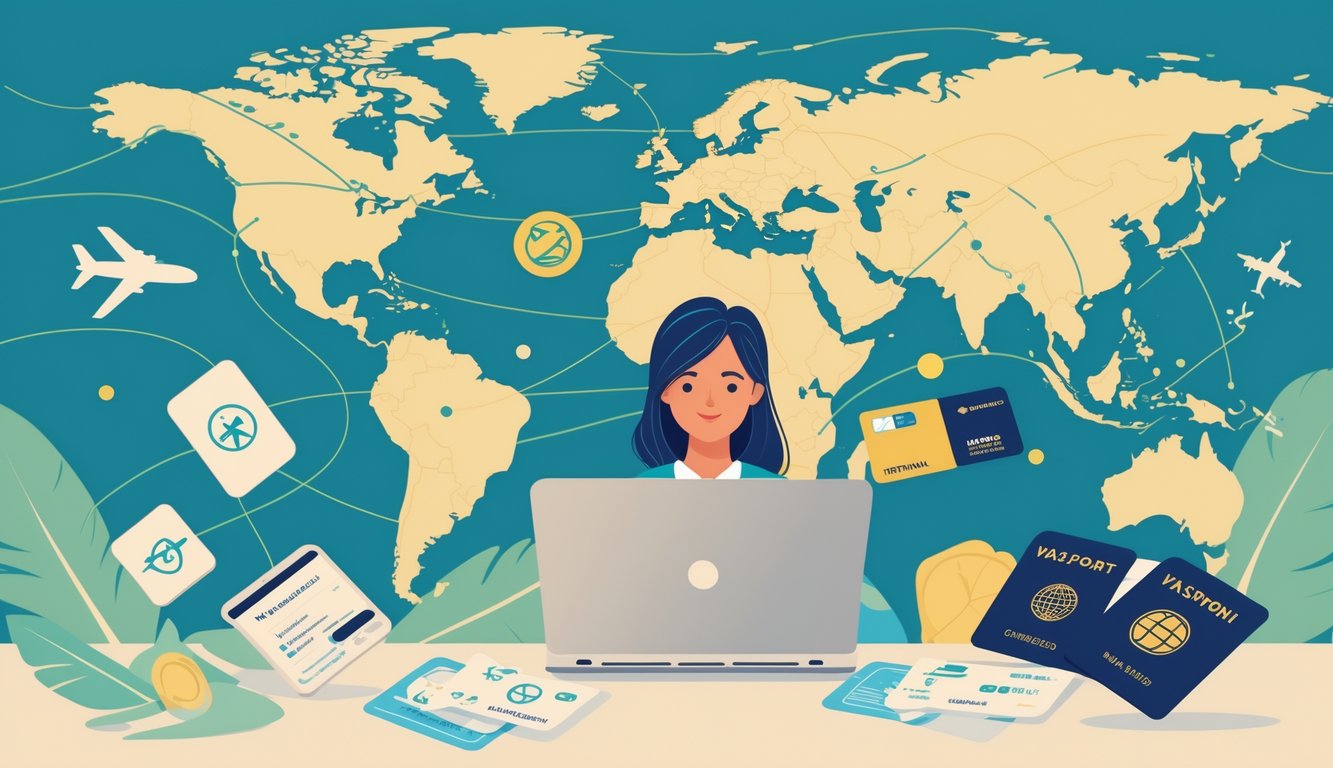
It’s 3 a.m. in Madrid, and I’m watching my friend stare at a $45 “foreign transaction” fee on his shiny new platinum travel card. Supposedly “no fees abroad,” right? Sure. The difference between “real” international-fee killers and the usual travel cards is laughably tiny, and banks just sneak in these 1-2% charges on every swipe. All those “global travel” perks? Mostly marketing. The Postcard Narrative site talks up stacking bonus offers and chasing the right cards, and yeah, I’ve got the receipts to prove it sometimes works, but the fine print is an absolute minefield. Read it or just accept you’re probably getting scammed a little.
What actually drives me nuts? People flexing about “free” flights to Tokyo, yet KLFY.com (2022) says most folks only get 27% of those rewards after interest and fees chew up the rest. There’s no magic trick to dodge every fee—unless you’re that Uber driver in Buenos Aires who swore he could hack ATMs, which, no, didn’t work—but if you don’t pay off your balance and double-check that “no foreign transaction fee” isn’t hiding behind an asterisk, you’re just burning money. If travel forums just said this plainly, maybe I’d spend less time obsessing over my statements and more time, I don’t know, actually traveling.
SPF 30 is enough (or so my dermatologist claims), but nobody at checkout warns you about those dynamic currency prompts—hit the wrong button, and poof, there goes an extra 4%. I watched a friend—MBA, works in finance—get tricked in Paris like a rookie. Here’s the only advice I trust: check your statement after every trip, fight those “service markup” surprises, and ignore influencer lists unless they specifically name 2024 policy changes. Spoiler: they usually don’t.
Understanding Major International Credit Card Fees
Swiping a card abroad seems easy—tap, sign, done—except last time in Tokyo, my bank account took a beating from charges I never even noticed approving. Fees just sneak onto statements. Most people don’t catch them unless they’re borderline obsessive, but those little hits add up faster than airport snacks.
Common Types of Fees When Traveling Abroad
Paying with a card overseas? I keep making the same mistake: forgetting about foreign transaction fees. My supposed “travel” card? Tried to grab 3% on every meal and metro ride, and the fine print backed them up.
Some travel rewards cards and airline-branded products actually skip these fees, but then they hit you with monster annual charges or some “premium” nonsense nobody mentioned at sign-up. American Express, Chase Sapphire Preferred, and Capital One Venture X at least say “zero fees” up front, but random no-annual-fee cards still sneak in charges. Comparing all these offers? Feels like a punishment for caring about money. I’ve checked Bankrate, NerdWallet, even called customer service (Rick Steves and every expat Facebook group says get the fee schedule in writing, never trust the rep). And I always triple-check receipts for surprise surcharges that show up out of nowhere.
How Currency Conversion Impacts Your Wallet
Land in a new country, buy water, and the price jumps for no reason—conversion fees, always hiding in the “foreign conversion rates” nobody explains. The transaction fee is at least listed, but the exchange rate? Totally opaque. Mastercard says they publish a daily rate, but no bank rep has ever explained it in a way I understood.
Paying in local currency or U.S. dollars? The POS machine flashes a choice, I panic, pick the wrong one, and pay extra. Every finance nerd I know says “always choose local currency” because letting the merchant’s bank pick the rate usually means you get gouged another 3-5%. I’ve done this in Paris and spent more on a croissant than lunch back home. Still not over it.
Dynamic Currency Conversion: What to Watch For
Dynamic currency conversion (“Pay in Dollars?”—it’s everywhere) is just a trap. Hit the wrong button, and suddenly you’re paying not just the bank’s fee but a mystery markup, sometimes 7% (European Payments Council, 2023). I asked my bank to reverse these fees—got laughed at.
Nobody tells you which shops are the worst. Electronics in Singapore? Souvenirs in Rome? Who knows. Staff sometimes push it to help their own numbers. Visa and Mastercard both admit merchants set their own rates, and no one overseas is going to bother explaining. My move now: say “Local currency only, thanks” at every checkout and watch the clerk’s hand like a hawk.
Choosing the Best Travel Rewards Credit Cards

So, I’m always sprinting through airports, muttering about card fees and trying to remember if I printed my boarding pass. After digging through travel card options, I’m convinced there’s no single “best” answer. Annual fees? Sometimes worth it, but the math feels like punishment.
Top Credit Cards With No Foreign Transaction Fees
Look, dodging those 3% foreign transaction fees is step one—unless you enjoy lighting money on fire. Capital One Venture X Rewards, Chase Sapphire Reserve, certain Amex Platinum versions (I don’t get the lounge hype, honestly)—they drop the fee.
Metro tickets in Tokyo, questionable cheese in Paris, whatever—I’ve skipped foreign fees for years with the right cards. Some no-annual-fee cards still charge foreign transaction fees (so annoying). The premium cards like Sapphire Reserve or Venture X? They don’t mess around, but $550/year stings unless you fly a lot. Last month, Forbes said Capital One and Chase are most reliable. Rewards rates matter, but honestly, not getting hit with surprise international fees saves more than the points. No conversion fees doesn’t always mean a good exchange rate, but sometimes “not the worst” is enough.
Comparing Annual Fees vs. Travel Benefits
I can’t even pretend I haven’t lost money here. My sister brags about her no-annual-fee cashback card. Meanwhile, my Chase Sapphire Reserve ($550 annual fee, yes, really) ate a chunk of my budget last January, but then paid for three lounges and refunded my lost luggage in Munich.
| Card | Annual Fee | Notable Benefits |
|---|---|---|
| Capital One Venture X | $395 | Priority Pass, $300 travel credit, no FX fees |
| Chase Sapphire Reserve | $550 | Airport lounges, 3x points on travel, trip insurance |
| Amex Platinum | $695 | Centurion Lounges, $200 hotel/airline credits |
Travel rewards cards with high annual fees throw perks at you—hotel credits, statement credits, rental insurance, points. But if you travel once a year? You lose money, period. Use every benefit or regret it. My friend just likes the metal card clink—don’t be that person.
Personal vs. Business Travel Card Options
My accountant friend (flies more for work than fun) swears business travel cards are a different beast—higher bonuses, better flight rewards, but way more paperwork. Chase Ink Business Preferred gives 3x points on travel and business up to $150,000/year, which makes personal cards look silly.
Switch to business cards (side gigs count, chill), and suddenly you’re buried in forms, but the signup bonuses are wild—ChooseFI says 90,000 points sometimes. Tons of freelancers skip this and miss free hotel nights. But, and here’s the headache: business cards sometimes skip the protections personal cards have (like that rental insurance loophole). I tried booking a hotel with my business card—blocked for “personal use.” Always happens when I’m jetlagged and just want to sleep.



